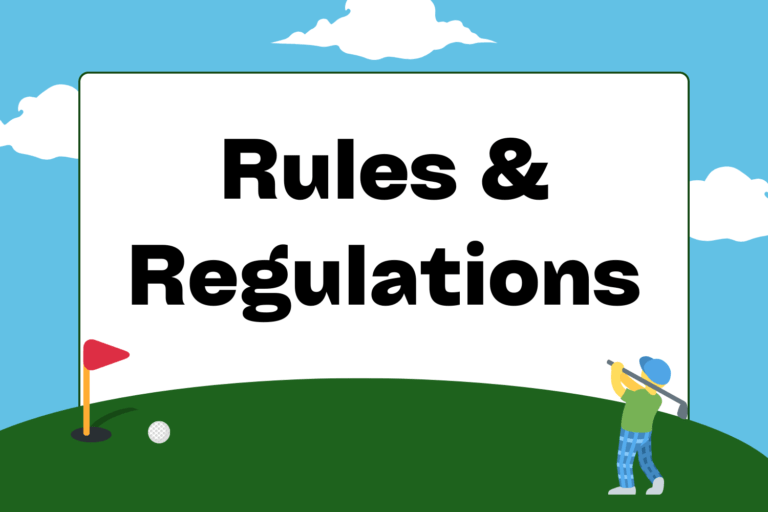At a certain point in your development as a golfer, you learned how to get up and down from a greenside bunker. And after gaining experience, you might have even preferred hitting from the sand, as opposed to some of the heavy grass around it.
But the confidence you feel as you approach your ball in the sand quickly dissolves when you see what misfortune has befallen you: a really, really bad lie.
Whether it’s a buried lie, plugged into the uphill face of a bunker, or a downhill slope, bad bunker lies require different strategies and lots of confidence. Here’s a guide to help with those bad luck bunker situations.
Fried Egg: the Buried Lie
A ball buried in the bunker—also known as a fried egg—involves a completely different mode of attack than the normal bunker shot. While hitting off of a clean bunker lie, you want to open both your stance and the face of the club to blast the ball out onto the green. However, in a buried lie, an open-faced wedge will do nothing to help you. When you can only see half of the golf ball or less, you’ve got to make some major changes to your normal bunker setup if you want to escape in one shot. Here’s how to do it:
Step 1: Square to Target
Unlike in your normal bunker setup, where you want to align yourself open to the target, it’s important to set up to a buried ball in a squared alignment. Make sure your feet, hips, and shoulders are parallel to the line of your aim.
Step 2: Weight Forward
Put three-quarters of your weight distribution on your front leg. This will ensure that you swing downward toward the ball, which is the right way to attack a buried lie.
Step 3: Closed Clubface
Just the opposite of a normal bunker shot—for a buried lie, depending on the severity of the ball’s depth in the sand (the deeper the ball, the more closed the clubface), close your club’s face by turning the club in your hands before gripping it. Make sure you adjust your alignment to the line of the clubface if it’s changed. With a normal bunker shot, the open face of a club skims the sand, allowing the bounce of the club to let the sand carry the ball with it. But with a buried lie, where skimming the top of the sand won’t do you any good, closing the clubface enables the clubhead to dig into the sand to get to the ball.
Hot Tip: Judge the Loft
Closing the clubface will definitely help you get cleaner contact with a ball buried in the bunker. But it also de-lofts your club, causing the ball to come out on a much lower trajectory. While this may be fine in some situations, there are other times where a bunker’s lip is up too high for a closed clubface to be effective. If that’s the case, don’t close the clubface as much. Trust that a solid swing with a squared clubface will get you the contact and the loft that you need.
Step 4: Steady Up, Power Down
Take a big backswing, keeping your lower body relatively still. As with all shots, keeping your head steady and your eyes focused on the ball is key. However, nothing in your setup or backswing will have any effect unless you power through the sand on your downswing. The ball, halfway plugged in the sand, will need a lot of force to pop out of its grave, so don’t be afraid to chop down at it. You want to hit about an inch behind the ball initially, and, if your clubface is in the correct position and you’ve mustered enough strength, you’ll see the ball plop out onto the green.
Downhill Bunker Shot
Usually if your shot hits the bunker on the fly, you’ll end up with a relatively flat or uphill lie. But sometimes when your ball just trickles into a bunker, or if you have some bad golf karma heading your way, you’ll end up with a much tougher shot: a downhill bunker lie. It is a tougher shot, yes, but it’s not impossible. Here’s what you need to do:
Step 1: Mimic the Slope
As with hitting from slopes on any lie, the first step is to adjust the angles of your body to match the angle of the slope. Make sure your shoulders, hips and feet are all at parallel angles; in this case, your front side should be below your back side.
Step 2: Square & Stable
Line up to the ball, much like with a buried lie, with a more square line to the target than you would on a normal bunker shot. Really flex your knees and dig your spikes into the sand to anchor yourself into the bunker. Having a solid base like this will help you stay down through the swing, which is, although always important, integral for a shot from a downhill lie.
Step 3: Steep on the Way Up
The biggest swing change you’ll need to make in order to hit a successful downhill bunker shot is this: take the club back on a steeper angle. This will let you come down and through the ball on your downswing. Again, staying down through impact is huge if you want to make solid contact.
Practice
Although bad lies on the golf course may be the result of bad luck, you can definitely control the conditions of your practice sessions. Get into a practice bunker and step on your ball to recreate a buried lie. Place your golf ball on the downslope of the hazard to practice that steeper bunker swing. Be creative and mix it up—you never know what sort of lie you’ll end up with during a round, so why not try as many as you can think of during practice? If you do that, even the most bizarre situations on the course won’t be able to stump you.





